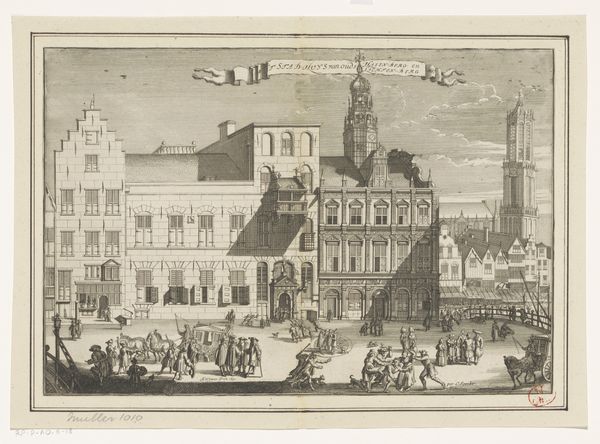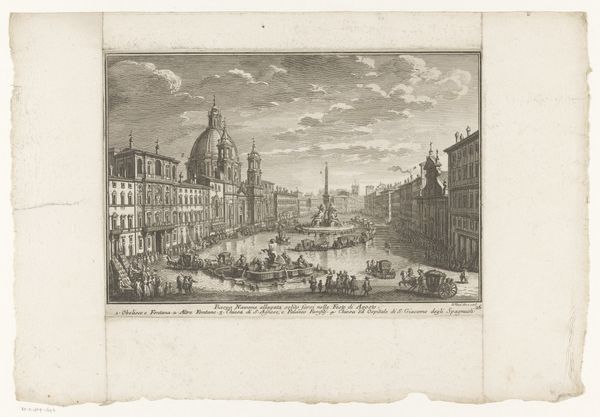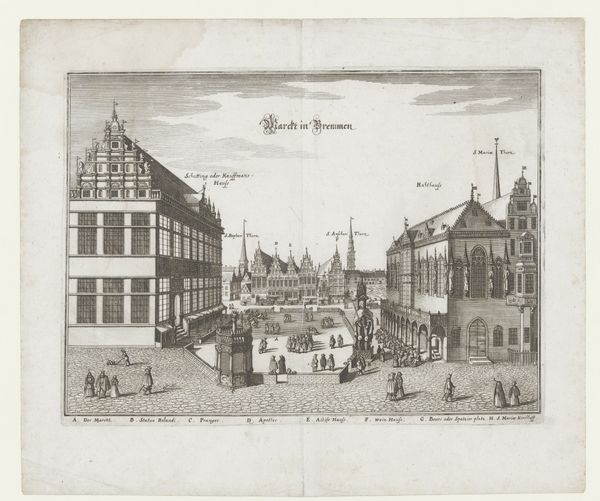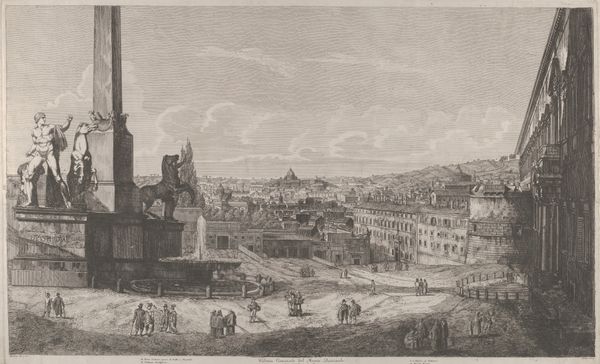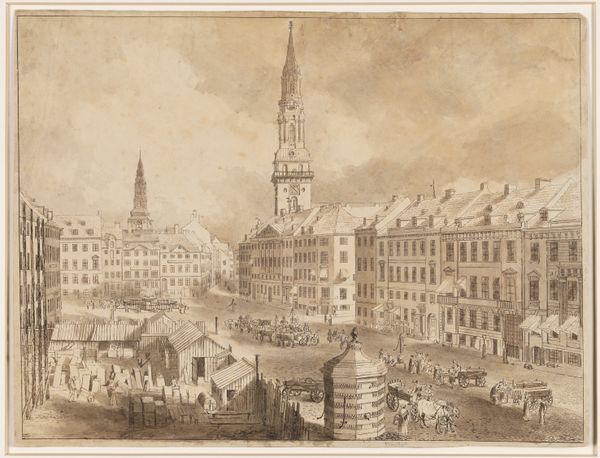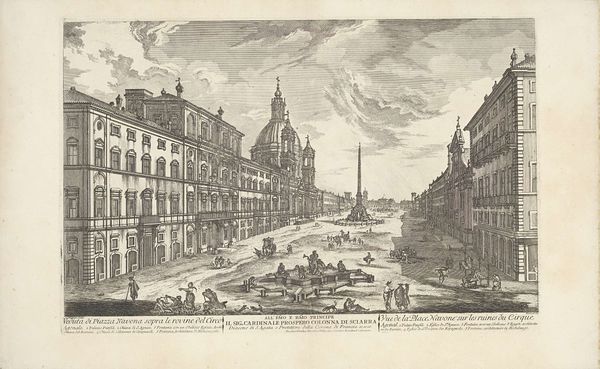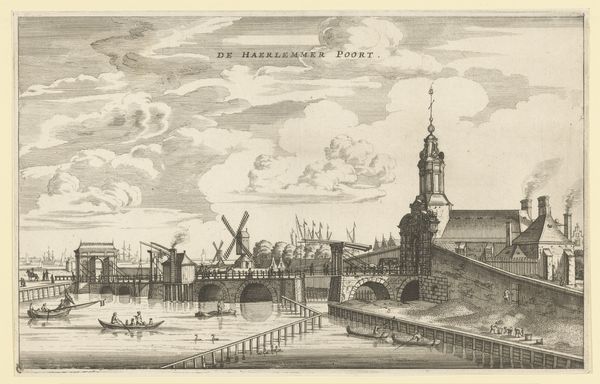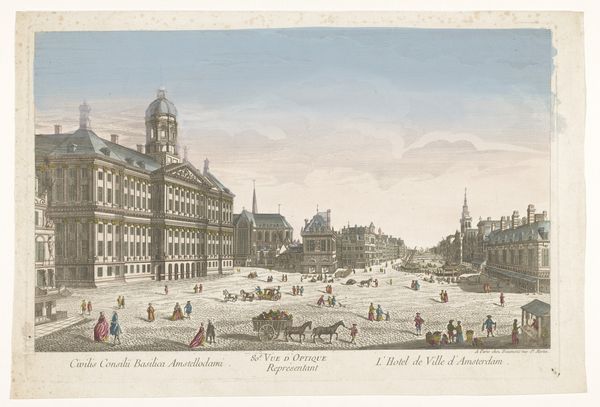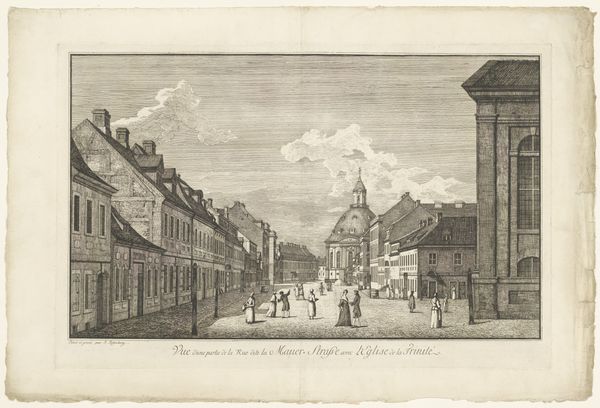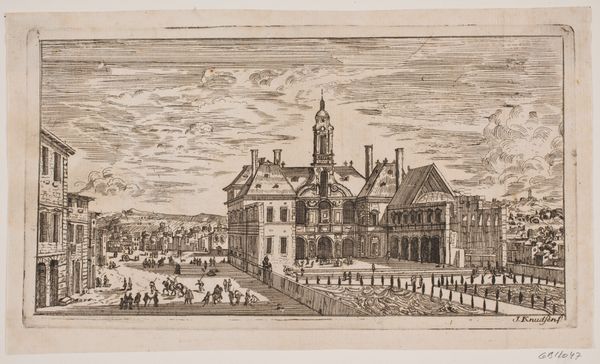
print, engraving, architecture
#
baroque
#
dutch-golden-age
# print
#
old engraving style
#
19th century
#
cityscape
#
engraving
#
architecture
Dimensions: height 283 mm, width 346 mm
Copyright: Rijks Museum: Open Domain
Editor: This engraving, "Gezicht op het Oude Stadhuis te Den Haag," made sometime between 1730 and 1736, depicts the Old Town Hall in The Hague. It has such incredible detail; you can see people going about their daily lives. What strikes you most about this piece? Curator: What I find interesting is how this print implicates labor and class. Look at the meticulously etched lines, the time that would take! Printmaking allowed for the broader circulation of images, connecting to wider social and economic structures, thus impacting distribution and potentially democratization of information beyond the elite circles who originally consumed this image. Editor: So, it’s not just about what is shown but *how* it’s shown, through this reproducible medium. How does the engraving technique itself contribute to its meaning? Curator: Precisely! Consider the materials involved. Copper plate engraving was labor-intensive and required skilled artisans. Its mass production also speaks to the economic engine driving Dutch Golden Age society. Do you see how the sharp lines lend a sense of realism but also idealize a particular urban experience? This is very far from the reality that laborers and enslaved people in the Dutch colonies would have known, or even poorer residents of The Hague itself. Editor: That makes me think about who had access to this image. It was probably mostly wealthy merchants and members of the upper class who were celebrating this age. Curator: Exactly. Furthermore, analyzing the engraving through a materialist lens exposes the connections between art, industry, and the prevailing power structures of the time. Look at how its distribution and consumption supported an emergent sense of civic pride amongst a growing mercantile class. Editor: It’s amazing to think that a print can tell us so much more about the economic and social context of the time. It goes beyond just the image itself! Curator: Yes! Examining the materials and modes of production pulls us away from a purely aesthetic reading and anchors us in the real, material conditions that shaped its creation and consumption. It re-values craft as an integral, essential piece.
Comments
No comments
Be the first to comment and join the conversation on the ultimate creative platform.
